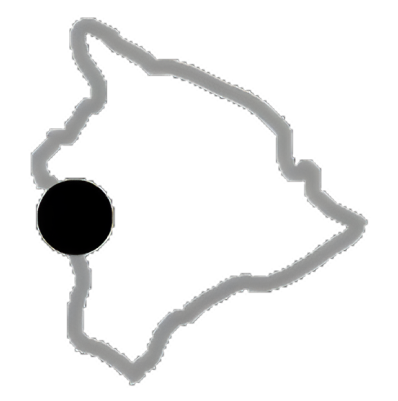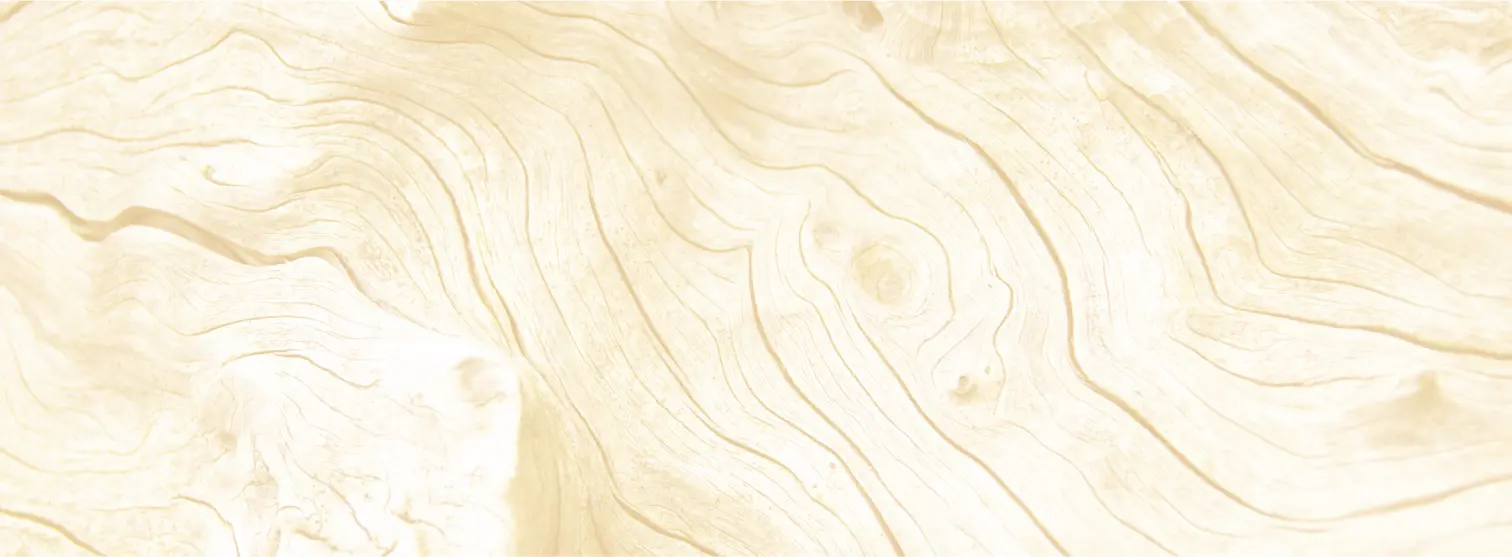Mauna Loa’s immensity is difficult to comprehend. Though it rises 13,680 feet above sea level, Mauna Loa begins its rise from the ocean floor some 16,400 feet down. So the mountain is over 30,000 feet high, taller than Mt. Everest. For sheer mass it is unequalled. The volcano covers an area roughly the size of all the other Hawaiian Islands combined. I’ve heard one geologist call it “the largest projected landmass between Mars and the Sun.” Another oft-quoted statement is that the entire Sierra Nevada mountain range in California could fit within Mauna Loa. Or how about the fact that Manhattan Island could fit within its summit caldera Mokuaweoweo.
Recently, the staff of Hawaii Volcano Observatory printed in the weekly Volcano Watch a fantastic description of Mauna Loa’s true vertical relief. One reason the ocean is so deep here in Hawaii is because of the downward flexing of the Pacific Plate. The weight of Hawaii’s volcanoes is pushing down the oceanic crust. With new technologies geologists have been able to view with an almost X-ray vision inside the bottom of Mauna Loa. As the volcano has built up, it has also depressed a mirror image of itself down into the sea floor. This depression extends 26,000 feet down from the ocean floor. Therefore, the complete height of Mauna Loa from its true base to the summit is 56,000 feet!
Progressive Jackpots in Canada: A Must-Read Guide from Casimatic
Have you ever dreamed of hitting that life-changing jackpot while playing your favorite casino games? In Canada, progressive jackpots have been making headlines with their massive payouts and thrilling gameplay experiences. If you’re curious about how these jackpots work, where to find the best opportunities, and how you can increase your chances of winning, then you’re in the right place. Casimatic presents a must-read guide on Progressive Jackpots in Canada, where we delve into the world of high-stakes gaming and uncover the secrets behind these lucrative prizes.
From popular online slots to traditional casino games, progressive jackpots offer players the chance to win fortunes with a single spin or hand. In this comprehensive article, we explore the ins and outs of progressive jackpots, reveal tips for maximizing your winning potential, and showcase the top Canadian platforms where you can test your luck. Whether you’re a seasoned player looking to up your jackpot game or a newcomer eager to learn more about the thrill of progressive prizes, join us on this exciting journey through the world of Progressive Jackpots in Canada.
Understanding Progressive Jackpots: What Makes Them Unique?
Progressive jackpots are a thrilling feature of online casinos in Canada, offering players the chance to win life-changing sums of money. These jackpots continuously grow as more players place bets on the associated games, creating enormous prize pools that can reach into the millions. At Casimatic, we understand the excitement and allure of progressive jackpots, which is why we have prepared this comprehensive guide to help Canadian players navigate and maximize their chances of hitting that elusive big win.
One of the key attractions of progressive jackpots is their potential to turn ordinary players into instant millionaires. Whether you prefer spinning the reels of online slots or testing your luck at table games, there is a progressive jackpot waiting to be won. Our guide covers the different types of progressive jackpots available in Canada, ranging from standalone jackpots that are specific to a single game to networked jackpots that pool contributions from multiple casinos. Understanding these distinctions can help players choose the right games that align with their preferences and winning strategies.
Moreover, our guide delves into tips and strategies for increasing your odds of winning a progressive jackpot. From managing your bankroll effectively to leveraging bonus offers and promotions, there are various ways to enhance your chances of hitting the jackpot. Casimatic is committed to providing Canadian players with the knowledge and resources needed to navigate the world of progressive jackpots confidently and responsibly. With our expert insights and recommendations, you can embark on your jackpot journey with confidence and excitement.
Top Progressive Jackpot Games in Canadian Online Casinos
Progressive jackpots are a thrilling feature of many online casinos in Canada, offering players the chance to win massive prizes that grow with every bet placed. For those looking to delve into the world of progressive jackpots, Casimatic provides a comprehensive guide that covers everything you need to know. From how progressive jackpots work to tips on increasing your chances of hitting the jackpot, Casimatic offers valuable insights for both new and experienced players.
One of the key advantages of progressive jackpots is the potential for life-changing wins. These jackpots can reach staggering amounts, often climbing into the millions before being won. Casimatic highlights some of the most popular progressive jackpot games available to Canadian players, giving readers a glimpse into the exciting world of high-stakes gaming. Whether you prefer slots, poker, or other casino games, progressive jackpots offer a unique opportunity to chase extraordinary payouts.
Casimatic also delves into the strategies and considerations that can help players make the most of their progressive jackpot experience. From setting a budget to understanding the different types of progressive jackpots, this guide equips players with the knowledge they need to navigate the world of online gaming with confidence. Whether you’re a casual player looking for some excitement or a seasoned pro aiming for that elusive big win, Casimatic’s guide to progressive jackpots is a must-read for anyone interested in maximizing their online casino experience.
Strategies for Winning Big on Progressive Jackpot Slots
Progressive jackpots are a thrilling aspect of online casino gaming in Canada, offering players the chance to win life-changing sums of money. These jackpots continuously increase in value as more players join the game, often reaching staggering amounts that can reach into the millions. At Casimatic, we understand the excitement and allure of progressive jackpots, which is why we have compiled this comprehensive guide to help Canadian players navigate the world of progressive jackpot games.
One of the key attractions of progressive jackpots is the potential for massive payouts. Unlike fixed jackpots, which have a set prize amount, progressive jackpots grow over time until a lucky player hits the winning combination. This means that the prize pool can accumulate rapidly, offering players the chance to win truly life-changing sums of money with a single spin. Many players are drawn to progressive jackpots for this reason, as the thrill of chasing a multimillion-dollar jackpot adds an extra layer of excitement to the gaming experience.
When it comes to progressive jackpots in Canada, players have a wide variety of games to choose from, ranging from classic slot machines to modern video slots. Popular progressive jackpot titles include Mega Moolah, Mega Fortune, and Hall of Gods, all of which have awarded massive prizes to lucky players in the past. These games are available at reputable online casinos that cater to Canadian players, providing a safe and secure environment for enjoying progressive jackpot gaming.
In conclusion, progressive jackpots offer Canadian players the opportunity to win substantial sums of money while enjoying their favorite casino games. Whether you prefer classic slots or modern video slots, there is a progressive jackpot game out there for everyone. By understanding how progressive jackpots work and where to find the best games, players can maximize their chances of hitting that life-changing jackpot. So, dive into the world of progressive jackpots with Casimatic’s guide and get ready for an exhilarating gaming experience!
The Impact of Progressive Jackpots on the Canadian Gambling Industry
Progressive jackpots are a thrilling feature of online casinos in Canada, offering players the chance to win massive prizes that continue to grow until someone hits the jackpot. At Casimatic, we understand the excitement and allure of progressive jackpots, which is why we have put together this comprehensive guide to help Canadian players navigate the world of progressive jackpot games with confidence.
When it comes to progressive jackpots, it’s important to know that these prizes can reach staggering amounts, often reaching into the millions. Popular progressive jackpot games like Mega Moolah and Mega Fortune have made headlines for their life-changing payouts, making them a favorite among Canadian players looking to strike it rich. With our guide, players can learn about the different types of progressive jackpots, how they work, and which games offer the biggest jackpots in the Canadian market.
For Canadian players looking to try their luck at progressive jackpots, Casimatic provides valuable tips and strategies to enhance your chances of winning big. From understanding jackpot triggers to managing your bankroll effectively, our guide covers everything you need to know to maximize your chances of hitting that elusive jackpot. Whether you’re a seasoned player or new to the world of online casinos, our guide will help you navigate the exciting world of progressive jackpots with ease.
Tips for Responsible Gaming While Chasing Progressive Jackpots
Progressive jackpots have taken the online casino world by storm in Canada, offering players the chance to win life-changing sums of money with a single spin. At Casimatic, we understand the thrill and excitement that comes with chasing these massive jackpots, which is why we have put together a comprehensive guide to help Canadian players navigate the world of progressive jackpots. Whether you’re a seasoned pro or a newcomer to the world of online gambling, our guide covers everything you need to know about progressive jackpots, including how they work, where to find the biggest jackpots, and tips for increasing your chances of hitting the jackpot.
From popular progressive jackpot slots like Mega Moolah to lesser-known jackpot games, our guide provides insights into the different types of progressive jackpots available to Canadian players. We also delve into the strategies and best practices for maximizing your chances of winning big, as well as highlighting some of the biggest jackpot wins in Canada’s online casino history. So, if you’re ready to embark on an exhilarating journey towards potentially winning millions, be sure to check out Casimatic’s guide to progressive jackpots in Canada and start spinning your way to jackpot glory!
Progressive jackpots in Canada offer an exciting opportunity for players to win life-changing sums of money while enjoying their favorite casino games. As highlighted in this comprehensive guide from Casimatic, understanding how progressive jackpots work, where to find them, and tips to increase your chances of winning can significantly enhance your gaming experience. Whether you’re a seasoned player or new to the world of online casinos, progressive jackpots present a thrilling prospect that adds an extra layer of excitement to your gameplay. So, dive into the world of progressive jackpots with confidence, armed with the knowledge and strategies shared in this guide, and you may just be the next lucky winner!
Scientists have been studying and monitoring Mauna Loa since 1843. The new images of Mauna Loa’s great depth are an example of remarkable technology and research. Just as remarkable are the studies that have mapped the surface of the volcano. With nearly a million acres of lava fields, some barren, but many covered with thick vegetation, geologists such as John Lockwood have spent years identifying and dating the different lava fields that cover the mountain. Their efforts, encompassing very nearly the entire surface of the mountain, have led to the best-documented chronology of eruptive activity of any volcano on earth. From their studies they’ve calculated that every 1000 years Mauna Loa covers 40% of her surface area with new lava. The first flow from Mauna Loa that was documented historically was in 1843. Since then the mountain has erupted 33 times. This eruptive record is one of the most active on earth.
Mauna Loa last erupted in 1984. The previous flow to that was 1975. Before both the 1975 and the 1984 eruptions, geologists measured an inflation of Mauna Loa. Magma charges the mountain swelling it like a balloon and with varying technologies this deformation can be measured. They also recorded increased seismic activity two years prior to the eruptions associated with the magma movement. Since the 1984 flow the volcano has inflated from magma storage underground. Mauna Loa has inflated 20 inches since then. Geologists believe that more magma has charged the mountain since the ’84 eruption, than did previous to it. The ’84 flow was not a small eruption. It produced “220 million cubic meters of lava, the third largest volume this century.” Geologists tell us it was putting out enough lava every hour to build a sidewalk from Honolulu to New York City. That flow made it within a few miles of Hilo. Though the mountain continues to swell, currently there is no increased earthquake activity suggesting an imminent eruption. But you can be sure Mauna Loa will erupt again.
When the eruption occurs it will add more mass to the big mountain. And it will offer the students and researchers another chance to observe and learn. Mauna Loa’s lessons extend beyond geology of course. It is not just a mountain of volcanic rock. It contains a wide variety of terrain and ecosystems all organized very nicely among differing ages of well cataloged and dated substrates. This marriage of earth and life sciences makes Mauna Loa a model system for ecological research. As the noted biologist Peter Vitousek says, “To biologists as well [as geologists], Mauna Loa is a place of global significance-not for rocks, but for the organisms and ecosystems that occupy it’s surface.” Mauna Loa is swelling with magma, sinking with weight, and offering us glimpses into some of the life’s lessons.


